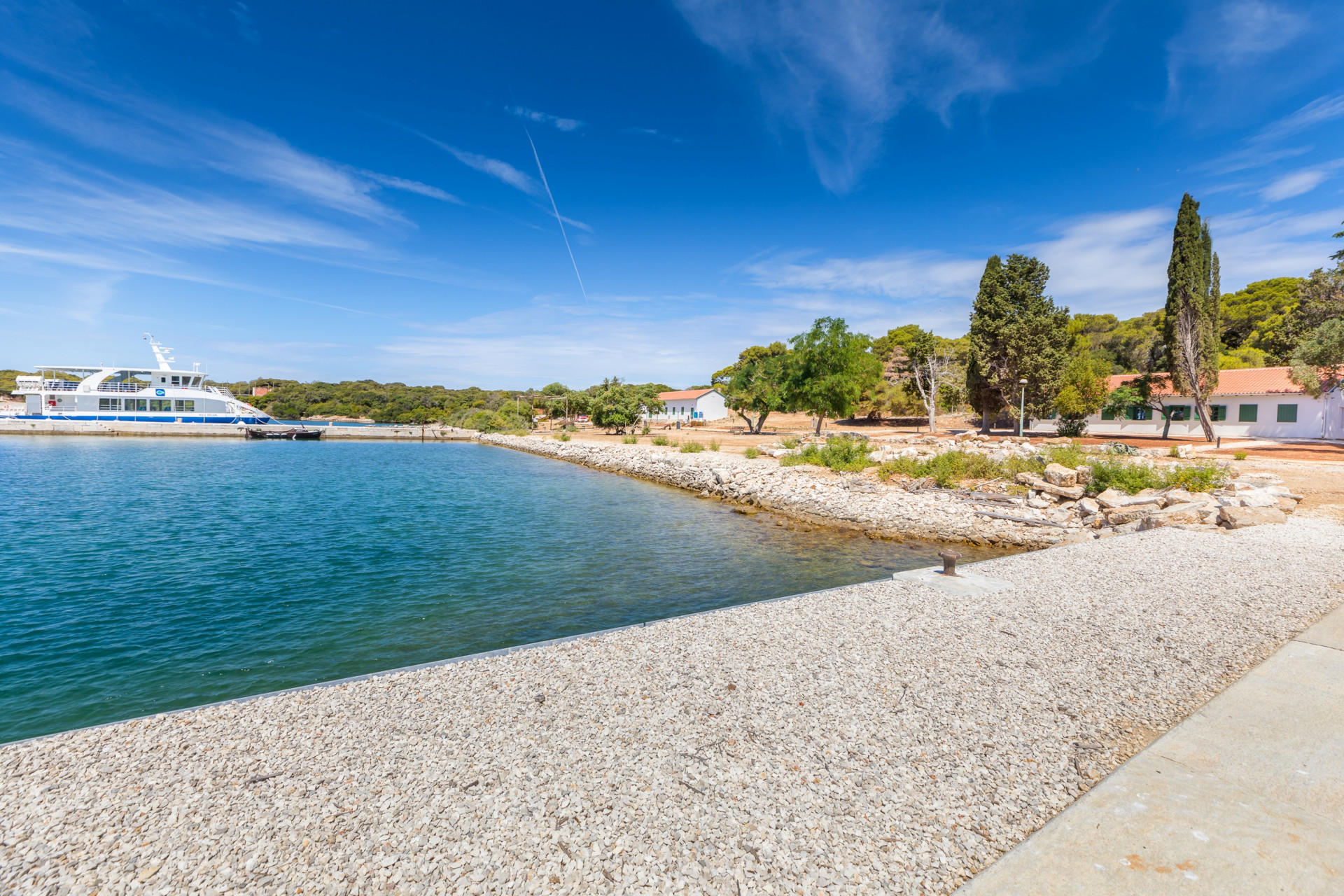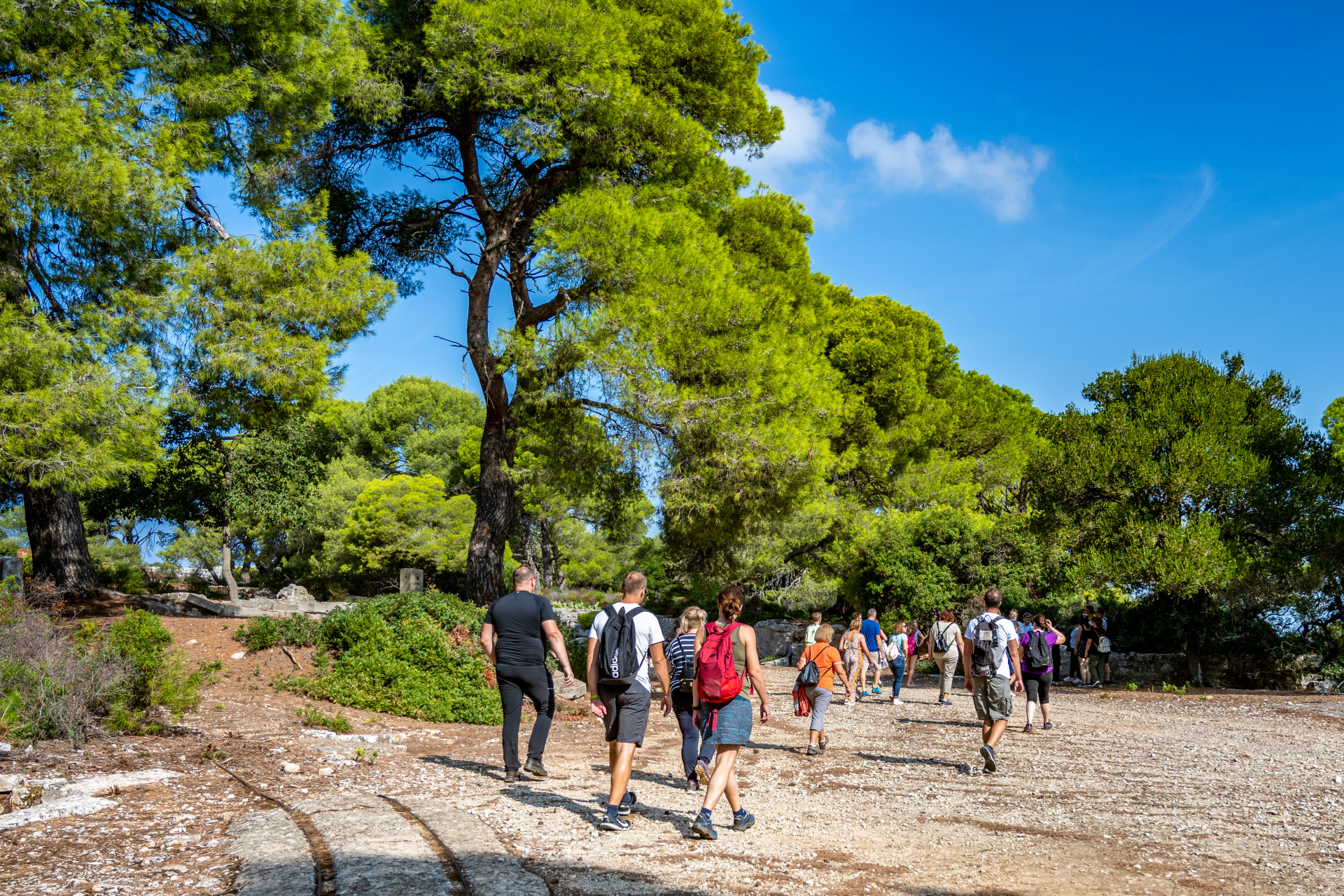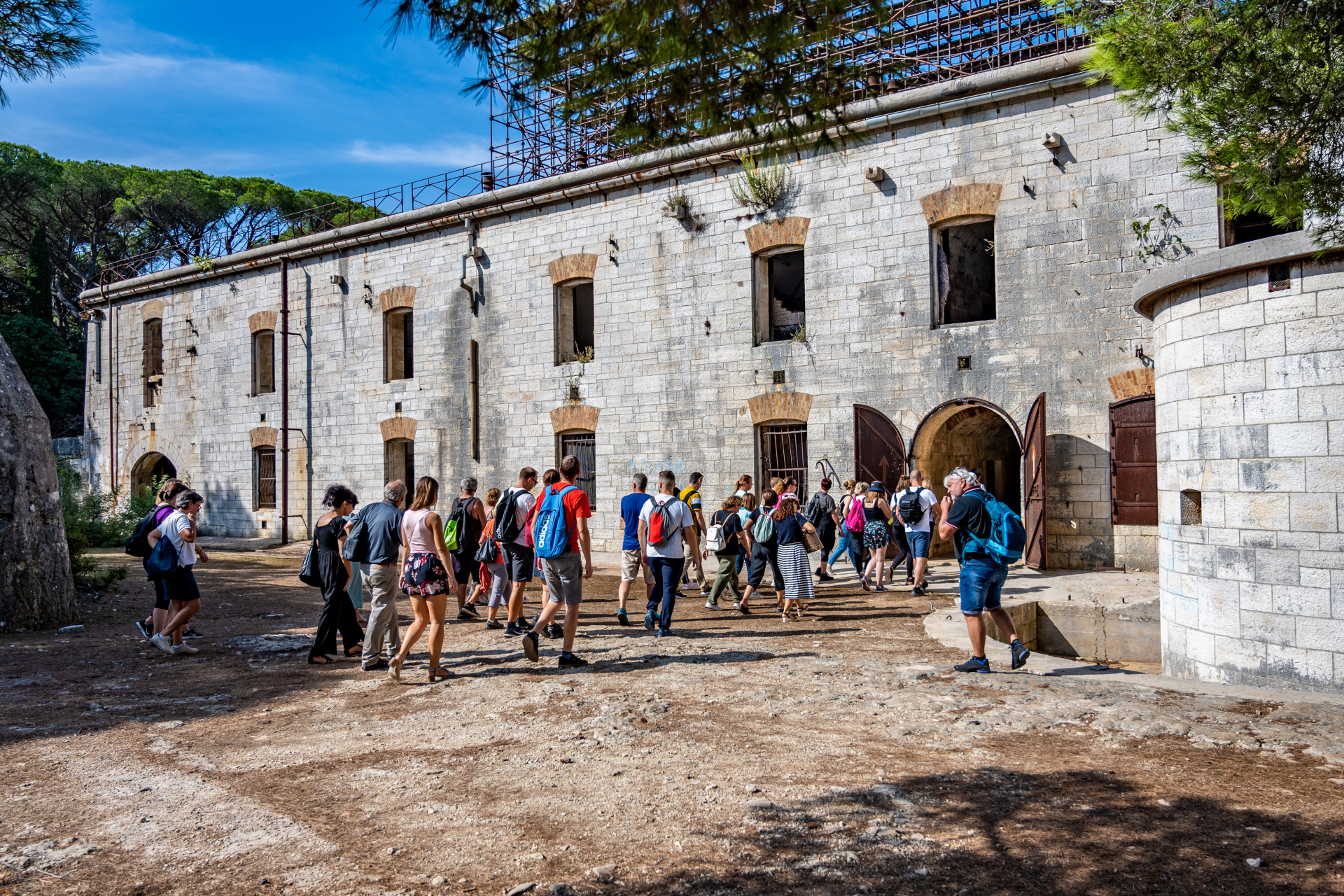The Brijuni Archipelago is an exceptional blend of natural beauty and cultural-historical heritage. The mild climate, favorable geographical conditions, deep inland bays, and well-defended elevated positions have ensured a continuous human presence from prehistoric times to the modern era. Mali Brijun is the second-largest island in the Brijuni archipelago, covering an area of 108.85 hectares with a coastline length of 8.28 kilometers. Mali Brijun is renowned for Fort Brioni Minor, the largest fortification on the Adriatic coast. Although Mali Brijun has retained its original landscape, characterized by dense maquis, numerous Austro-Hungarian fortifications are hidden from view. The rich heritage of Brijuni connected to stone is showcased on the walking-educational trail "Brijuni Stone Stories," which leads from the small harbor of St. Mikula on Mali Brijun to the northern part of the island, where one of the Austro-Hungarian batteries, likely built on the eve of World War I, is located at Cape Glavina.

Upon arrival by boat to the port of Mali Brijun, your guide will gather all the visitors and arrange the island walking tour programme.
L’isola di Brioni Minore è aperta ai visitatori

Walk and talk Mali Brijun 2024.
Educational Program for Exploring the Diversity of Mali Brijun. The tour includes a visit to Fort Minor, the most prominent among the well-preserved Austro-Hungarian military defense structures, and the educational trail "Stone Stories of Brijuni," created as part of the KAMEN-MOST project.
Guided Tours
- September: 15th and 30th
Schedule:
- Fažana - Mali Brijun: 9:30 AM
- Mali Brijun - Fažana: 2:15 PM
Program:
- Fort Minor
- Educational trail "Stone Stories of Brijuni"
- Flora of Mali Brijun
- Refreshment break
Notes
IMPORTANT!
Excursion difficulty - moderately difficult
The excursion is not suitable for people who have difficulties walking or moving. The trail is not suitable for strollers and wheelchairs. This excursion requires footwear suitable for walking/hiking on a wooded or rough terrain - firm and solid footwear and clothing adapted to outdoor stay and the current weather conditions.
Visitors are recommended to carry at least one bottle of water.
Pets on the island
Pets are allowed on the island (dogs have to be leashed at all times). Admission for dogs is charged.
Booking and ticket purchase
Individual guests buy tickets at https://shop.np-brijuni.hr/hr. Reservations for groups are mandatory and are made at [email protected].
Educational trail “Stone Stories of Brijuni”
This content-rich educational trail was created as part of the KAMEN-MOST project (STONE-BRIDGE project), implemented within the framework of the European Territorial Cooperation Programme between Slovenia and Croatia for the period 2007 - 2013. The aim of the project is to preserve the heritage and raise awareness regarding the traditional techniques, exploitation and use of stone. Untouched nature, quarries and fortifications dominate the landscape of Mali Brijun, and this trail represents a true gem, revealing completely different features compared to Veliki Brijun. The trail includes 15 information boards, and offers a pleasant 2.5-kilometre walk. There are numerous features to enjoy, spanning from geological, technical, construction, historic, fortification elements to ethnographic elements.
The trail leads you to the main port, towards Cape Glavina on the north side of the island. If you get tired during your walk and wish to take a quiet moment to think and reflect on everything you have seen, you can rest in the shade at special spots drawn from the trail along the quarry line.
Fort Brioni Minor
Among the many preserved facilities that were once part of the Austro-Hungarian military-defence system, Fort Brioni Minor is surely the most prominent, and it undoubtedly dominates the island of Mali Brijun. Fort Brioni Minor and Fort Tegetthoff on Veli Brijun were the westernmost fortifications on the first line of defence of the Austro-Hungarian naval port in Pula. The fort was constructed in the last five years of the 19th century, and upon its completion became the largest Austro-Hungarian fort on the Adriatic coast. Four other forts were constructed on the Brijuni Islands.
The dimensions of the fort were 175 x 90 m, and it would house a crew of 12 officers and 530 soldiers. The surface area of the fort is 15,750 m2, and it was protected by
12 cannons.
In the recent years, the fort has served as a theatrical scene of the Ulysses Theatre during the tourist season, featuring plays such as King Lear, Medea, Hamlet, Tesla Electric Company and Drunken Night 1918.
 Parchi della Croazia
Parchi della Croazia
 Italiano
Italiano





































